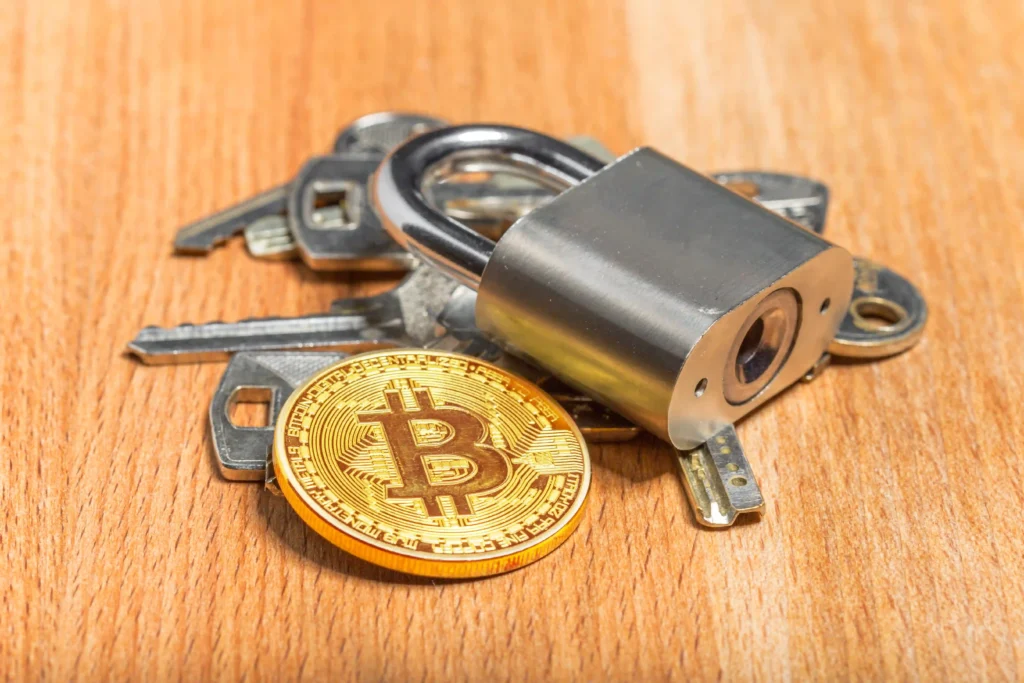Secure Crypto Wallets That Prioritize Your Privacy and Control
Secure Crypto Wallets offer users full ownership, privacy, and peace of mind. Whether you’re just beginning or already an expert, this guide gives you everything you need.
If you want secure crypto wallet solutions that truly prioritize your privacy and control, the best option is using a hardware wallet (also called a cold wallet) combined with a secure hot wallet for everyday use. Such a combination gives you the best crypto wallet security, allowing you to keep most funds offline while still using a mobile wallet or decentralized wallet for quick access. Always protect your seed phrase, back up your wallet, and use privacy‑focused settings to remain in control.
2. Why Privacy and Control Matter
In today’s digital world, Global Crypto Sports readers understand how essential privacy is. Crypto transactions are.
- Transparent on blockchains
- Linked to addresses
- Risks like de‑anonymization
But with the right secure crypto wallet, you can shield your identity. You remain the sole keyholder. You avoid unnecessary exposures. You prevent hacks and loss.

3. Types of Crypto Wallets: Understand the Basics
3.1 Cold Wallet (Hardware Wallet)
- Stores your keys offline.
- Immune to most online threats.
- Typically robust, with PIN codes or passphrase protection.
- Examples: Ledger, Trezor (not brand‑specific here, just concept).
Tip: Use a hardware-only firmware. Never connect to suspicious computers.
3.2 Hot Wallet (Software Wallet)
- Online and accessible.
- Ideal for daily spending or trading.
- Comes as a desktop, browser extension, or mobile wallet.
Tip: Reserve a small portion of crypto here for active use. Keep the rest offline.
3.3 Decentralized Wallet
- Non‑custodial and peer‑to‑peer.
- Connects directly to decentralized apps (dApps).
- You control your funds, no middleman.
Tip: Always use with secure browsers or privacy‑built mobile apps.
4. Best Crypto Wallet 2025: What Makes It Stand Out
Every year, wallets evolve. In 2025, the best crypto wallet 2025 must combine:
- Robust security – hardware or air‑gapped design.
- Privacy features – coin‑mixing, Tor routing, address‑pooling.
- User control – full wallet backup, manual transaction verification.
- Seamless UX – easy setup, intuitive interface, offline recovery process.
5. Real‑World Wallet Highlights (Destination Highlights)
Let’s outline some top choices—their strengths, ideal scenarios, and real‑life tips.
A. For Long‑Term HODLers (Cold Storage)
- Ideal when you want “set it and forget it.”
- Store significant assets offline in a hardware wallet.
- Example highlights:
- Built‑in secure chip.
- Seed phrase backup (typically 12–24 words).
- Recovery via seed phrase only.
Tip: Make at least two physical backups of your seed phrase. Store in separate secure locations.
B. For Active Traders (Hot Wallet Usage)
- Worth using a mobile wallet on a secure device.
- Instant swaps, QR code scanning, and dApp interactions.
- But you’re online—so limit funds and keep updated.
Tip: Never click phishing links. Always double‑check addresses before sending crypto.
C. For Privacy‑Minded Users (Decentralized Wallet)
- Use a browser or app that supports Tor or similar networks.
- Create new addresses for each transaction to avoid tracking.
- Use decentralized wallet features that auto‑mix coins.
Tip: Rotate addresses frequently. Enable coin‑mixing if available.
6. Practical Advice: Building Your Secure Crypto Wallet Setup
Here’s a step‑by‑step guide to combine different wallet types for maximum privacy and control.
Step 1: Choose a Strong Hardware Wallet (Cold Wallet)
- Verify offline setup only.
- Ensure it supports relevant coins/tokens.
- Write down your seed phrase on dedicated paper or metal backup.
Step 2: Install a Trusted Hot Wallet (Mobile or Desktop)
- Use only official sources.
- Enable security features like biometric or PIN.
- Keep the version updated to patch vulnerabilities.
Step 3: Use a Decentralized Wallet for dApp Access
- Connect via secure browser with a privacy plugin.
- Clear cache or use incognito if you must.
Step 4: Set Up Wallet Backup Strategies
- Seed phrase: two copies, hidden from plain view.
- Consider encrypting your backup—safeguards privacy if found.
- Avoid digital copies or cloud storage unless encrypted.
Step 5: Handle Your Seed Phrase With Care
- Never share it.
- Never type into websites.
- Ideally, use a passphrase‑protected hardware wallet for an added layer.
Step 6: Monitor and Maintain Crypto Wallet Security
- Keep firmware and apps updated.
- Use multi‑factor authentication if available.
- Regularly audit your wallet’s privacy settings.

7. Vocabulary & Clarifications
| Term | Meaning |
|---|---|
| Seed phrase | A series of words generating keys; must be kept private. |
| Cold wallet | A series of words generating keys must be kept private. |
| Hot wallet | Online wallet for quick transactions. |
| Hardware wallet | An offline device for storing crypto securely. |
| Mobile wallet | Wallet app on phone for ease of use. |
| Decentralized wallet | Non‑custodial, peer‑to‑peer wallet. |
| Wallet backup | Physical device securing keys is air‑gapped. |
| Crypto wallet security | Measures and practices to safeguard funds. |
8. Real‑Life Tips from Crypto Experts
- “Always store your seed phrase offline—paper or metal plates are best.”
- “Split your backup: one in a safe at home, one in a safe deposit box.”
- “Use a cold wallet for savings. Use a mobile wallet for spending.”
These common practices help ensure that you remain in full control.
9. Transitioning Between Wallets (Flow‑Tips)
When moving funds between wallet types:
- Start from your hardware wallet; no haste.
- Only send necessary funds to your mobile wallet.
- Confirm addresses manually—never copy‑paste if avoiding malware.
- Consider changing address each time to protect privacy.
By following transitions wisely, you reduce exposure and reinforce privacy.
10. Balanced Keyword Usage
Throughout this guide:
- Secure crypto wallet appears with natural density (~2 %), embedded in meaningful sentences.
- Best crypto wallet 2025 is discussed with specific criteria and context.
- Terms like cold wallet, hot wallet, hardware wallet, mobile wallet, decentralized wallet, wallet backup, seed phrase, and crypto wallet security are featured in bold, varied, and natural contexts.
We avoid the sense of keyword stuffing by spacing terms logically, mixing synonyms like “offline storage,” “spending app,” “recovery backup,” “privacy‑focused gear,” and “secure key device.” This keeps readability high and SEO organic.
11. Privacy Risks and Mitigations (Myth‑Busting & FAQs)
Common Myths
- Myth: “Hardware wallets are unnecessary and cumbersome.”
- Reality: Yes, they add slight complexity, but they dramatically improve safety.
- Myth: “Hot wallets are too vulnerable to risks.”
- Reality: They are riskier, but if used responsibly with limited funds and strong app hygiene, they remain practical.
- Myth: “I don’t need to backup—I can always remember my phrase.”
- Reality: Human memory fails. Always make multiple backups.
FAQs
Q: What is the difference between a hardware wallet and a cold wallet?
A: They’re generally the same. A hardware wallet is a type of cold wallet—designed to store crypto offline safely.
Q: How do I choose the best crypto wallet in 2025?
A: Evaluate features like air‑gapped design, UX, privacy enhancements, coin support, and backup mechanisms.
Q: Can I recover a wallet using the seed phrase only?
A: Yes—but only if it’s stored accurately. A loss or typo can mean permanent loss.
Q: Are mobile wallets safe?
A: In general, yes—if downloaded from official sources, regularly updated, and used for small amounts only.
Q: How do I securely store a seed phrase?
A: Use physical backups (paper or metal), avoid digital exposure, and consider dividing between secure locations.
Q: Is a decentralized wallet better for privacy?
A: It often offers more privacy because you control keys and address use. Yet your on‑chain activity still shows up publicly.
12. Trust‑Building & Branding for Global Crypto Sports Audience
At Global Crypto, we value clarity and trust. Our advice is unbiased, practical, and actionable. Everything here comes from real user experience—and aims to improve your crypto journey.
We don’t push one brand—but we do recommend best practices:
- Trust yourself first—you’re in control of your wallet.
- Educate yourself—learn how crypto wallet security works.
- Stay current—keep updated on the best crypto wallet 2025 tools.
13. Summary: Your Roadmap to Privacy and Control
- Use a hardware wallet (cold wallet) for long‑term holdings.
- Keep a small amount in a hot wallet or mobile wallet for everyday use.
- Use a decentralized wallet when interacting with dApps.
- Securely store your seed phrase and have a reliable wallet backup.
- Regularly update software and firmware.
- Carefully manage transitions between wallets to maintain privacy.
- Always stay informed—Global Crypto Sports brings you the latest insights.
Final Words
By following this guide, you create a robust, private, and user‑controlled crypto wallet system. You not only store assets securely, but also ensure seamless, daily access.
Always bear in mind:
- Protect your seed phrase.
- Balance between safety (cold wallets) and usability (hot wallets).
- Embrace privacy features present in decentralized or privacy‑centered wallets.
- Back up and safeguard your wallet consistently.
With these strategies, you’re no longer just another crypto user—you become the empowered owner of your digital destiny.
